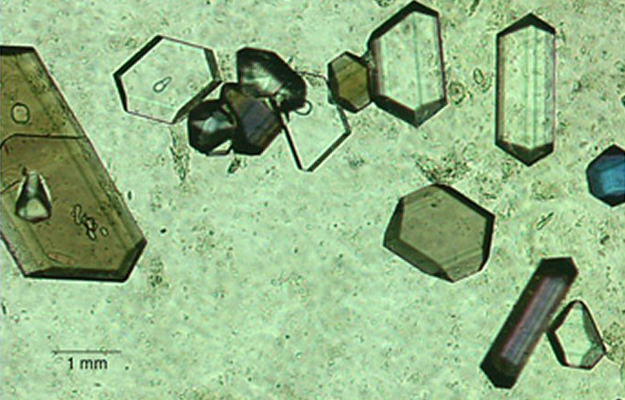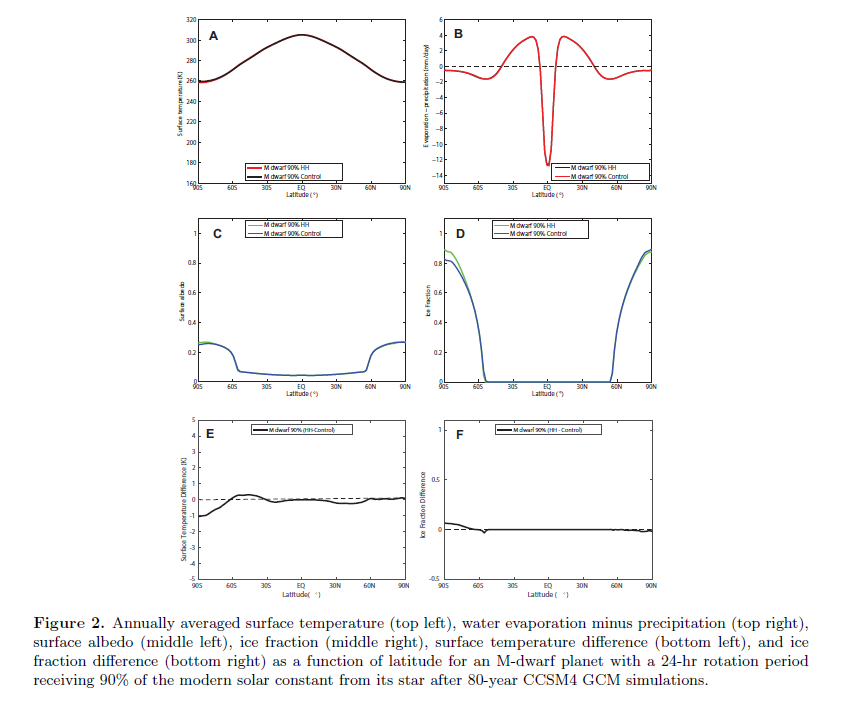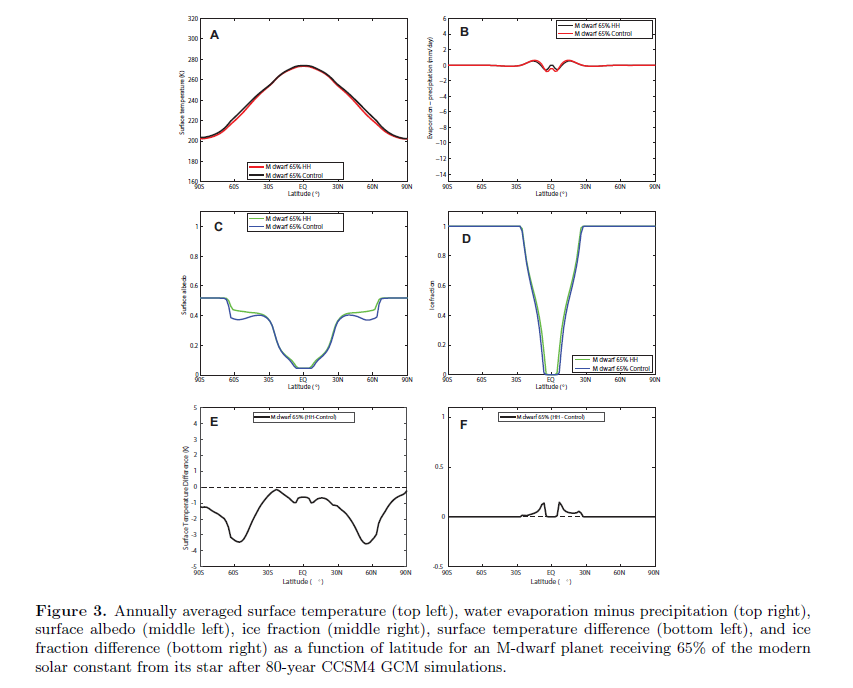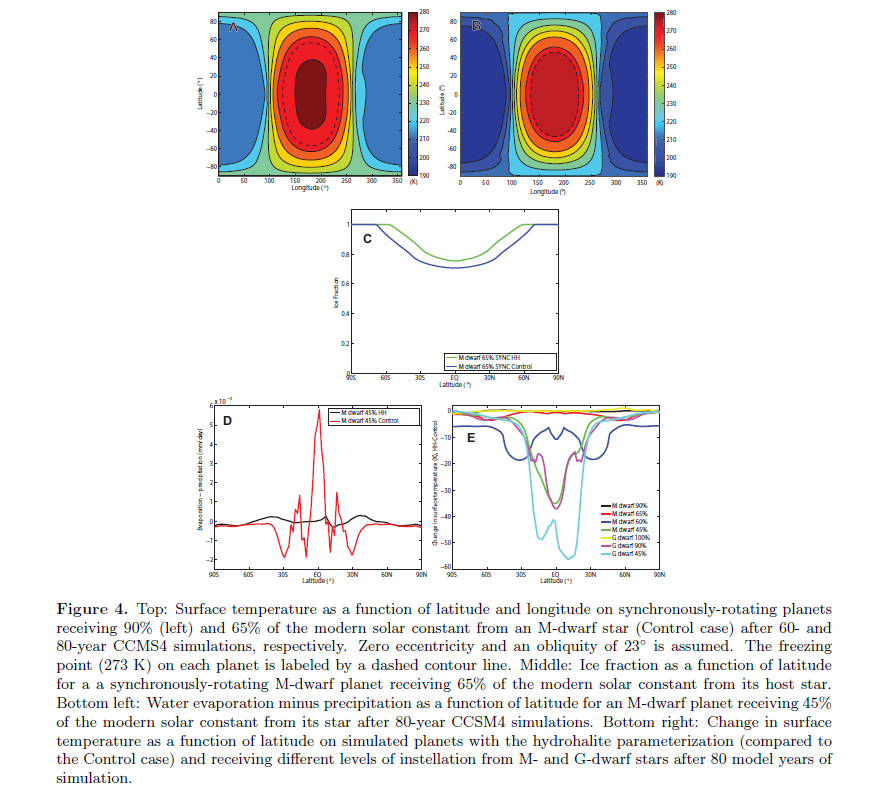
So you found a planet, congrats. Now what? The next question on your mind might be, is it habitable? But first, what does the word habitable even mean? That in itself, is a great question with a variety of good answers. The most accurate answer might be: any planet where a human could live in moderate comfort. Although it should be noted this definition is itself up for debate, but let’s explore further. What is “comfortable” to a human? Well, not too hot. Not too cold. Just like Goldilocks, we like our planets just right when it comes to temperature, that is, temperatures somewhere in the range of -10 to 40 Celsius (14 to 104 Fahrenheit). Any colder and your toes freeze, any hotter and you might overheat.
But what determines a planet’s temperature? Many factors play a role, but you might list the big three as: the planet’s host star, the planet’s distance from the star, and the composition of the planet itself. Of course, the hotter the host star, the hotter the planet, and the closer is planet to the star, the hotter it gets. This is intuitive to anyone who has sat around a campfire; build a bigger fire or stand a bit closer, it gets hotter. Both of these factors are relatively easy to calculate for any exoplanet (planet outside of our solar system) that astronomers might find. But that third factor, planet makeup, is the one that we understand the least and it is the hardest to measure (in fact, as of right now, it is impossible).
Cue Professor Aomawa Shields of UCI’s Physics and Astronomy Department. Shields specializes in simulating exoplanet surface compositions, atmospheres, and climates. One of her more recent papers focuses on a particular surface composition: Hydrohalite, which is a crystalline structure of frozen salt (NaCl·2H2O). Hydrohalite is found on Earth but only in extreme conditions, as it requires very cold temperatures; it was likely more prevalent in the past during the Snowball Earth era roughly 700 million years ago.
But what makes this substance interesting to Shields and her team is Hydrohalite’s albedo, or reflectivity. A surface with a higher albedo means the surface reflects more light, while a lower albedo means more light is absorbed. Albedo can change depending on the wavelength of light being considered and Hydrohalite has a higher albedo in the infrared than in the visible light portions of the electromagnetic radiation spectrum; in stark contrast to regular water ice, which has a very low albedo in the infrared, meaning it absorbs more infrared light than Hydrohalite. This is of particular importance when considering planets with host stars that are M Dwarfs, which primarily emit radiation in the infrared. Therefore, a planet with a Hydrohalite surface orbiting an M Dwarf will have a different climate than the same planet orbiting a G-type star like our Sun; the question is, just how different? And for the same star scenarios, how much would a planet’s climate differ if it were covered by water ice instead of Hydrohalite?
Hydrohalite has not been modeled under such conditions before. Shields first created her model planet, a near Earth replica: the same mass, radius, atmosphere, 24-hour rotation period, and CO2 content. Then, she placed this planet into two simulated star systems, one where the host star was an M Dwarf, a star that primarily emits light in the infrared part of the spectrum, and the other is a G Dwarf star, a star similar to our Sun in that it primarily emits light in the visible part of the spectrum. Then she adjusted the flux of starlight received by her planets in each star system; flux being the amount of energy released by the star which is actually absorbed by the planet, here it is measured in units of solar flux, or the amount of energy that Earth receives from our Sun. The more flux received by a planet, the more energy is absorbed, and therefore the warmer the planet will be. Lastly, there is a switch to turn on or off the ability to allow Hydrohalite to form. This allows for control cases which the simulations with Hydrohalite can be compared to.

With these simulated planets and stars in place and the ability to turn up or down the flux, Shields tested under what conditions Hydrohalite formed. First, a sanity check: since we don’t see a Hydrohalite crust on Earth, the simulated planets should show the same result. Sure enough, in the model, the Earth-like planet receiving the same flux from a G Dwarf star as Earth does from our Sun did not get cold enough to form Hydrohalite. Similarly, the same planet orbiting an M Dwarf star but only receiving 90% of the solar flux did not get cold enough to form Hydrohalite. This was further confirmed by running the simulation with and without Hydrohalite formation. Both simulations showed the same result, as is detailed in Figure 2. Then, ramping down the flux from the M Dwarf to only 65% of solar flux, the planet iced over but left a “belt” of open water around the planet’s equator for both the control and Hydrohalite cases. Surface temperatures became slightly lower and surface albedo goes up when Hydrohalite was turned on, but water precipitation drops as well, these differences are shown in Figure 3.

In addition, planets in M Dwarf systems are likely synchronously rotating with their host star, which means the planet rotates once in the time it takes to complete one orbit. Shields also modeled this situation. For 90% solar flux, there was little difference between control and Hydrohalite cases, even though these planets are susceptible to Hydrohalite formation, but for 65% solar flux, temperatures on the Hydrohalite planet were 10 Celsius lower, which created a large ice coverage when comparing to the 24-hour rotation simulation. Then turning down the flux even further to 45% of the solar flux, the M Dwarf saw a massive change in its Evaporation minus Precipitation when Hydrohalite is allowed. A measurement of the water cycle on the planet is shown in Figure 4d. Furthermore, the G Dwarf star saw a large drop in surface temperature when Hydrohalite was allowed to form, see Figure 4e.

Shields concluded from this study that at lower fluxes, Hydrohalite becomes a major factor in determining the surface temperatures of a planet and all that follows, such as ice coverage fraction and water precipitation. In particular, the large difference in the surface albedos of Hydrohalite and water ice in the near-infrared end of the spectrum are the main driving factor behind the differences in the global temperature of a planet. Furthermore, G Dwarf stars are shown to be more sensitive to Hydrohalite and the Stellar Flux.
This work has real-world implications. Shields points out there are already confirmed planets in environments very similar to the simulations she performed. She cites Proxima Centauri, an M Dwarf with a planet in synchronous rotation which receives 65% of the solar flux (which also happens to be the closest star to our own Sun). In the future, Shields wants to continue this work by simulating other exotic ices which are found within our own solar system and performing similar tests. Then she plans to add different land surface types to her simulations and explore how the climates change on simulated M Dwarf; with these tools, she hopes to see what possible environments exist on confirmed planets.
Find the original paper, here.
Post by Jack Lubin, graduate student working on his PhD in Astrophysics at UCI.